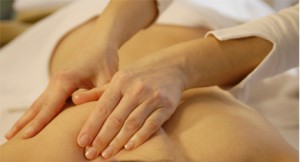Bodywork and Manual Therapy: An Overview
 Bodywork and manual therapy are general terms that refer to body manipulation therapies used for relaxation and pain relief. Massage and chiropractic are two well-known forms of manual therapy. The idea behind bodywork is that people learn (or are forced by injury or stress into) unnatural ways of moving or holding their bodies. This unnatural movement or posture changes the natural alignment of bones, which in turn causes discomfort and may contribute to health problems.
Bodywork and manual therapy are general terms that refer to body manipulation therapies used for relaxation and pain relief. Massage and chiropractic are two well-known forms of manual therapy. The idea behind bodywork is that people learn (or are forced by injury or stress into) unnatural ways of moving or holding their bodies. This unnatural movement or posture changes the natural alignment of bones, which in turn causes discomfort and may contribute to health problems.
The aim of bodywork is to realign and reposition the body to allow natural, graceful movement. Bodywork, along with identifying possible contributing causes of unnatural movement and posture, is thought to reduce stress and ease pain. Many individuals use bodywork to promote relaxation, relieve stress, and reduce pain and limited motion associated with certain disorders of the muscles and joints, such as arthritis and fibromyalgia.
Some people feel that massage works because the touch is healing. Touch also communicates a sense of caring.
Some of the most common forms of bodywork are:
- The Alexander Technique
This technique focuses on proper alignment of the head, neck, and trunk. It emphasizes improving health by increasing awareness of proper posture. - The Feldenkrais Method
A gentle form of bodywork that increases flexibility and coordination, Feldenkrais exercises are intended to help increase a person’s awareness of body movement and develop new patterns of movement. - The Trager Approach
People use this approach to help relearn natural movements and exercises so their bodies can function better. Practitioners teach gentle, rhythmic motions to improve flexibility and promote relaxation (called psychophysical integration) and dancelike exercises to increase awareness of body movement (called Mentastics). - Deep Tissue Massage
Deep tissue massage is often used to promote relaxation, improve blood flow, and relieve muscle tension. The therapist uses long, gliding strokes and kneading and tapping techniques on the top layer of muscles in the direction of blood flow to the heart. This may also include moving the joints gently to improve range of motion. It is used to treat long-lasting muscle tension. The therapist applies slow strokes (with the fingers, thumbs, and elbows) using intense pressure to reach deeper layers of the muscles in an attempt to treat chronic tension in deep muscles of the body and to relieve pain and increase flexibility. - Rolfing
A form of deep tissue massage, practitioners use this method to realign the tissues that cover and connect all muscles and body organs (fascia) as bringing the body back into proper alignment is thought to reduce pain, improve flexibility and energy, and reduce muscle tension. - Dance/Movement Therapy
This therapy has many of the same characteristics as the bodyworks above with the addition of creative and expressive art elements.
Bodywork can be a safe form of therapy when a qualified and experienced practitioner performs it. Always tell your doctor if you are using an alternative therapy or if you are thinking about combining an alternative therapy with your conventional medical treatment. It may not be safe to forgo your conventional medical treatment and rely only on an alternative therapy.
+ Interested in Body Work or Manual Therapy? Find a Massage or Manual Therapist near you!

